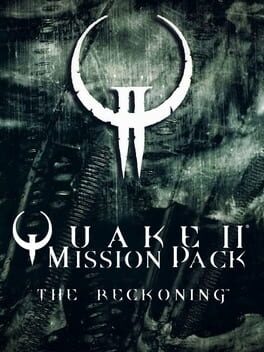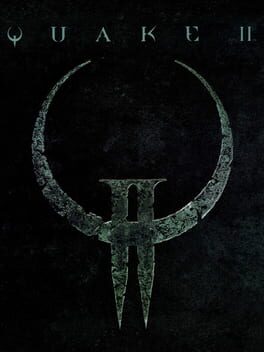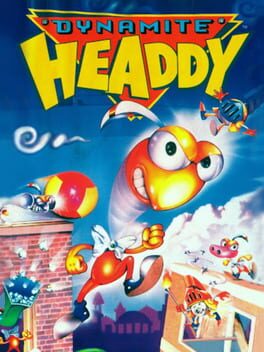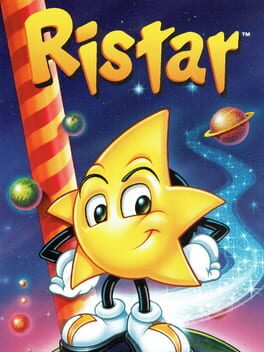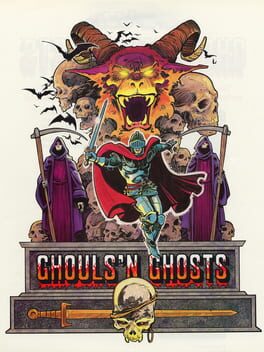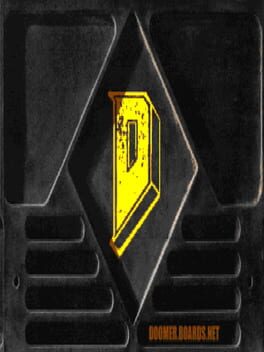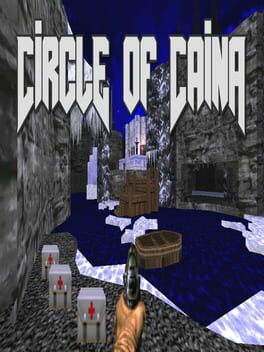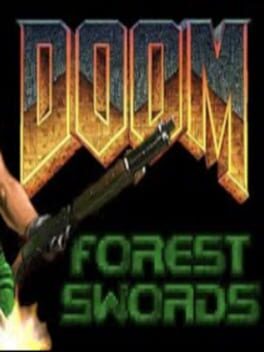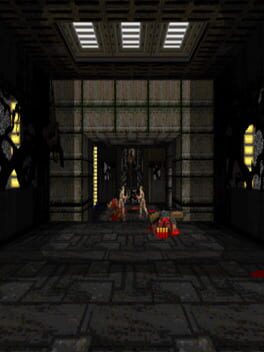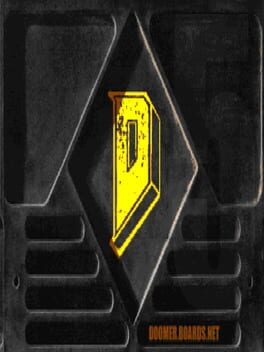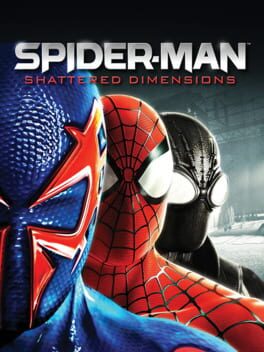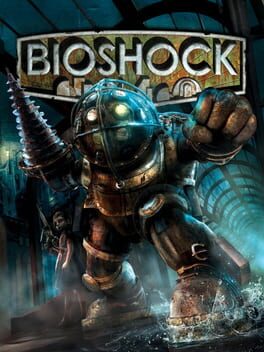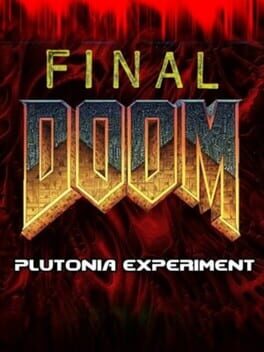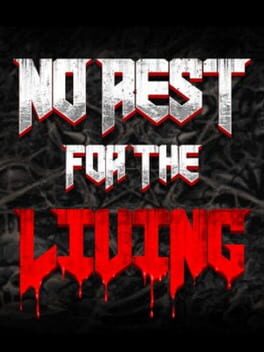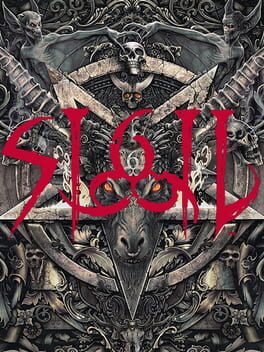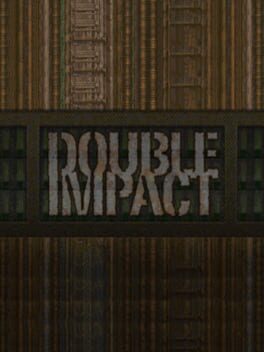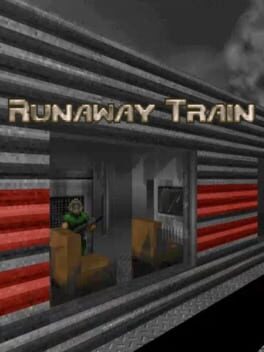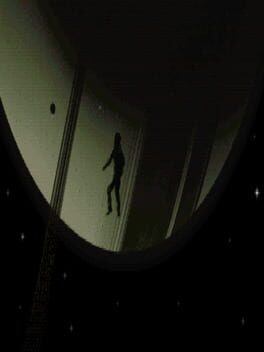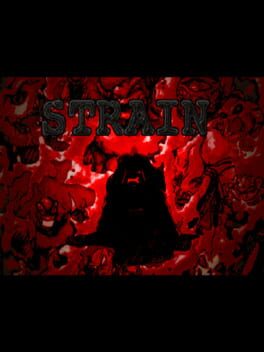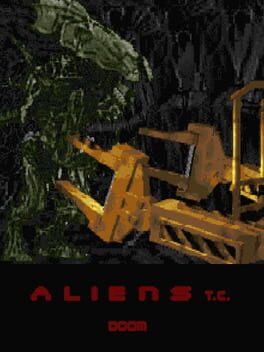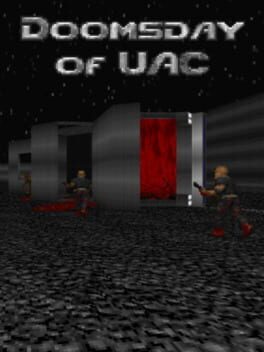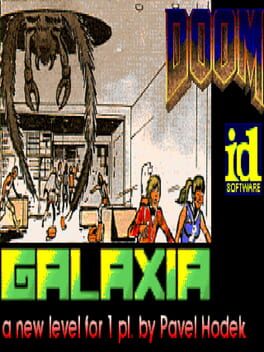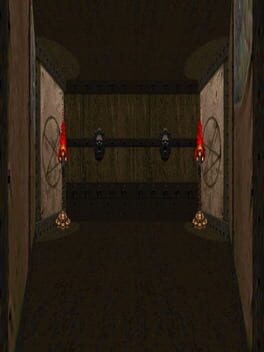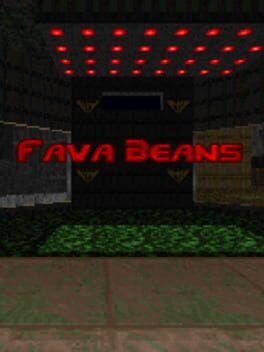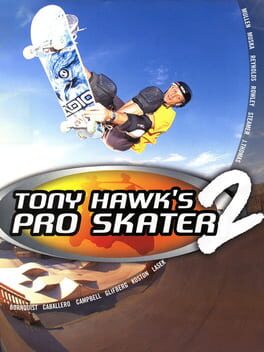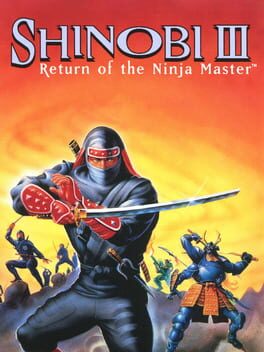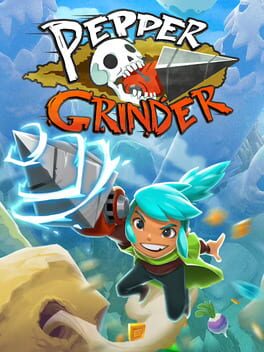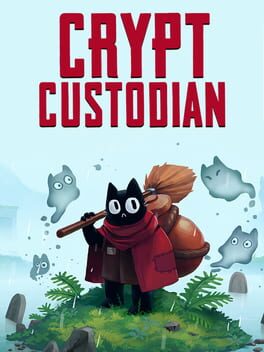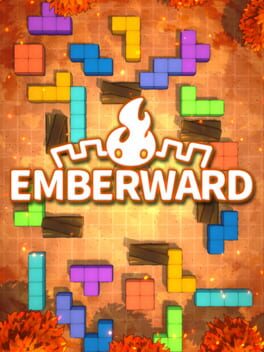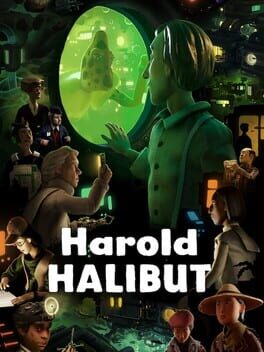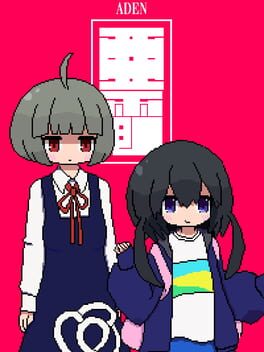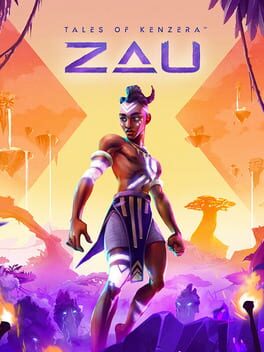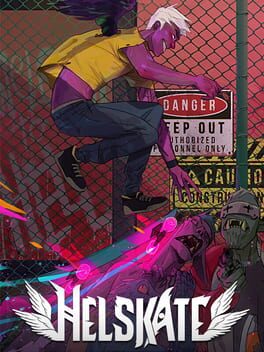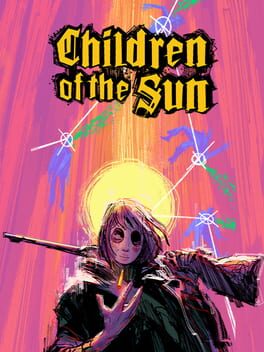Retro
78 reviews liked by Retro
The infamous Ground Zero turrets are significantly nerfed in the NightDive Quake II remaster, however Ground Zero still remains a notch more frustrating than the rest of the expansions. Chiefly due to some particularly cruel encounter design. Still worth engaging with so long as you know what you're getting into. I'd probably have liked it much less were it not for the new compass feature always providing a clear route to the next encounter. Without it I imagine the lack of an ingame map would make figuring out where to actually go with no more than a text blurb commanding you to "Return to the [INDISTINCT TECH BASE #X]" a somewhat directionless and frustrating task.
Like most classic fps expansions the level design here sucks ass and feels like it takes 10 centuries to complete.
Unsurprisingly it turns out the newest sourceport's rebalancing doesnt improve much when youre mostly walking down corridors. Actually you could argue it makes the experience worse.
Hated this 20 years ago, still hate it now.
Unsurprisingly it turns out the newest sourceport's rebalancing doesnt improve much when youre mostly walking down corridors. Actually you could argue it makes the experience worse.
Hated this 20 years ago, still hate it now.
Quake II
2023
“Conman,” you ask, “is Quake II (2023) the complete package? I heard it includes Original Recipe™ Quake II, Quake II 64, and a few other sub campaigns including a brand new one by the supposed Indiana Jones devs. I also heard that multiplayer, achievements, numerous QoL additions, playable demos of prerelease builds of Quake II, concept art, models, and multiplayer support are all included! Is this true?”
Yes my child, Nightdive is at it again. “But why only 4 stars, great sage? I hypothetically care about star ratings or whatever. You’re very handsome by the way.”
Well, my delicious snap pea, the game in question is Quake II.
I like Quake II. I think it’s a good shooter, and I’ve had a bit of a soft spot for it since I first played it within Quake 4. Yeah. Anyway, unfortunately, kiddo, I can’t say I like it as much as Quake. I guess I could, but it would be a lie, baby. I won’t lie to you. I’m tired here’s a list.
Weapons: Nice selection overall. I’m not a fan of guns sharing an ammo pool but that happens in lots of games like this. Railgun absolutely clears.
Enemies: feels like there’s only three kinds and they range from okay to kind of annoying to fight.
Music: Big Bumpin’
Level design: I could have used a few more level gimmicks. I’m serious, the waterway level was cool. Overall I didn’t hate any of the levels though, and that means a lot in a game like this. Good job Quakers.
Story:
Aesthetics: Cohesive, but if they ever do a modern reboot of Quake they should reboot Quake. The overall aesthetic here is maybe even more varied than the first game, but is generic by comparison.
Did I forget anything? Oh yeah I actually don’t love that you store items in an inventory. I barely ever used the items. Didn’t really need to, and I played on Hard and found most of the secrets in the game. I did so because I liked playing it despite the aforementioned issues. Four bags of popcorn and one soda.
“Conman, my king, I agree and/or disagree with this review” sick you’re my new best friend we should be friends in real life.
Yes my child, Nightdive is at it again. “But why only 4 stars, great sage? I hypothetically care about star ratings or whatever. You’re very handsome by the way.”
Well, my delicious snap pea, the game in question is Quake II.
I like Quake II. I think it’s a good shooter, and I’ve had a bit of a soft spot for it since I first played it within Quake 4. Yeah. Anyway, unfortunately, kiddo, I can’t say I like it as much as Quake. I guess I could, but it would be a lie, baby. I won’t lie to you. I’m tired here’s a list.
Weapons: Nice selection overall. I’m not a fan of guns sharing an ammo pool but that happens in lots of games like this. Railgun absolutely clears.
Enemies: feels like there’s only three kinds and they range from okay to kind of annoying to fight.
Music: Big Bumpin’
Level design: I could have used a few more level gimmicks. I’m serious, the waterway level was cool. Overall I didn’t hate any of the levels though, and that means a lot in a game like this. Good job Quakers.
Story:
Aesthetics: Cohesive, but if they ever do a modern reboot of Quake they should reboot Quake. The overall aesthetic here is maybe even more varied than the first game, but is generic by comparison.
Did I forget anything? Oh yeah I actually don’t love that you store items in an inventory. I barely ever used the items. Didn’t really need to, and I played on Hard and found most of the secrets in the game. I did so because I liked playing it despite the aforementioned issues. Four bags of popcorn and one soda.
“Conman, my king, I agree and/or disagree with this review” sick you’re my new best friend we should be friends in real life.
Dynamite Headdy
1994
I've got real admiration for the theatrical trappings, with panels falling off the back wall and gyrating stagehands gussying up the set as you stroll through, but I think coming back to this style of gameplay doesn't hit the same for me anymore. the treasure hyperfocus on impressive boss fights is here without the richer mechanics of gunstar heroes or alien soldier, leaving much stricter scenarios where the player has less leverage over the proceedings. it's heavily setpiece-driven and thus built upon cracking open whatever essential strategy solves each individual encounter rather than learning particular mechanics over the course of the game. a good example would be izayoi, who has a rapid arm extension attack that aims for your head, so if you throw your head above you right when she starts tracking, you can repeatedly have her whiff and then bop her in the face when she briefly exposes it afterwards. that's a cool little extension of the game's primary mechanic (you can throw your head in any direction), but once you lock it in the repetition of her behavior pattern and her cyclically available weak point make the fight rather static.
not sure what to think of the different abilities you can get with various heads throughout either. theoretically I could've enjoyed having them woven in through enemies or something else organic a la kirby, but having the abilities just sitting out in the open right where you need them feels a bit raw. it's especially apparent given how few there are that alter mobility or do anything other than make combat easier; perhaps a bit of tunnel vision on the developer's part, even though you can tell they attempted some actual level design here. you may get a sequence with some wall-climbing thanks to the spiky head ability, but these segments boil down just to "scale the wall with the powerup" without many complicating factors thrown in aside from a late-game segment where you use it to stall on the ceiling and avoid rocket trains zooming by. the way that abilities are applied in the boss fights also fall into a narrow paradigm, with more than a few bosses having abilities sitting around that effectively shut them off: time stop in multiple fights, both a bomb with crazy damage and invincibility in the aforementioned izayoi fight, and the hammer in both rever face and the final boss fight. really something where some sort of trade-off regarding grabbing the ability would've made more sense; the developers settled instead of interleaving junk abilities in the rotating ability selection that will inevitably cause you to eat a lot of damage until they wear off.
not sure what to think of the different abilities you can get with various heads throughout either. theoretically I could've enjoyed having them woven in through enemies or something else organic a la kirby, but having the abilities just sitting out in the open right where you need them feels a bit raw. it's especially apparent given how few there are that alter mobility or do anything other than make combat easier; perhaps a bit of tunnel vision on the developer's part, even though you can tell they attempted some actual level design here. you may get a sequence with some wall-climbing thanks to the spiky head ability, but these segments boil down just to "scale the wall with the powerup" without many complicating factors thrown in aside from a late-game segment where you use it to stall on the ceiling and avoid rocket trains zooming by. the way that abilities are applied in the boss fights also fall into a narrow paradigm, with more than a few bosses having abilities sitting around that effectively shut them off: time stop in multiple fights, both a bomb with crazy damage and invincibility in the aforementioned izayoi fight, and the hammer in both rever face and the final boss fight. really something where some sort of trade-off regarding grabbing the ability would've made more sense; the developers settled instead of interleaving junk abilities in the rotating ability selection that will inevitably cause you to eat a lot of damage until they wear off.
Ristar
1995
started to see the vision once I realized the grab (your only verb outside of jumping) gives you i-frames when you bounce off of whatever you're grabbing... pretty cool wrinkle on an otherwise plain set of mechanics. a lot of the game is carried by the dense mix of geometric terrain and organic outgrowths a la sonic; it's no surprise that much of this team got rolled into sonic team for NiGHTS into dreams the year after. said team really demonstrates their technical aptitude as well, with some stunning overlapping parallax on stages such as planet automaton and swirling line scrolling in the background of the itamor lunch fight. ristar emotes fluidly, with his walking scowl morphing into a grin and twirl upon defeating hard enemies. occasionally he'll even show a penchant for childlike play, such as in this snowball fight setpiece.
a first impression yields something a little dry on the gameplay front, with single-hit enemies and slow movement compounding into something more leisurely than interesting. thankfully around the halfway point the design veers into level-unique puzzles and setpieces. the one that stuck out to me the most was a series of areas in planet 4 involving babysitting this radio(?) item across various hazards in order to give to various birds who want them blocking your way. presages a klonoa style of puzzles built from manipulating objects in the environment rather than working with pre-defined aspects of the player's toolkit. near the end the game veers into some execution challenges as well, with mixed results. ristar's grab actually has a lot more going on to meets the eye: not only does he have the aforementioned i-frames, but he also gains a bit of height off his bounce, and he can hold onto some interactables indefinitely, swinging back and forth using his arms as a tether. the former gets used for a couple climbing challenges jumping between walls and swinging poles, which makes for some pleasant execution trials in the midst of the level-specific stuff. the latter never gets expanded on quite as much, probably because ristar maintains no momentum from his swinging when he releases due to bouncing back off of the fulcrum he's attached to, so actually manipulating the technique to achieve certain bounce angles is a bit unintuitive.
bosses are neat across the board; while somewhat cycle-based, the designers trickle a couple small points for attacking them before they're obviously wide-open. some of these (I'm thinking of specifically the bird boss on planet 4 and its array of non-linear projectiles) encourage the i-frame abuse in interesting ways. by the end of the game, however, it seems like they expect you to exploit it pretty openly to get anywhere, and by that point the bosses end up becoming grab spam. definitely makes the fights fly by quicker, but I find myself preferring the more cautious approach I took during the earlier bosses, although I would imagine upon a replay some of the same techniques apply.
a first impression yields something a little dry on the gameplay front, with single-hit enemies and slow movement compounding into something more leisurely than interesting. thankfully around the halfway point the design veers into level-unique puzzles and setpieces. the one that stuck out to me the most was a series of areas in planet 4 involving babysitting this radio(?) item across various hazards in order to give to various birds who want them blocking your way. presages a klonoa style of puzzles built from manipulating objects in the environment rather than working with pre-defined aspects of the player's toolkit. near the end the game veers into some execution challenges as well, with mixed results. ristar's grab actually has a lot more going on to meets the eye: not only does he have the aforementioned i-frames, but he also gains a bit of height off his bounce, and he can hold onto some interactables indefinitely, swinging back and forth using his arms as a tether. the former gets used for a couple climbing challenges jumping between walls and swinging poles, which makes for some pleasant execution trials in the midst of the level-specific stuff. the latter never gets expanded on quite as much, probably because ristar maintains no momentum from his swinging when he releases due to bouncing back off of the fulcrum he's attached to, so actually manipulating the technique to achieve certain bounce angles is a bit unintuitive.
bosses are neat across the board; while somewhat cycle-based, the designers trickle a couple small points for attacking them before they're obviously wide-open. some of these (I'm thinking of specifically the bird boss on planet 4 and its array of non-linear projectiles) encourage the i-frame abuse in interesting ways. by the end of the game, however, it seems like they expect you to exploit it pretty openly to get anywhere, and by that point the bosses end up becoming grab spam. definitely makes the fights fly by quicker, but I find myself preferring the more cautious approach I took during the earlier bosses, although I would imagine upon a replay some of the same techniques apply.
Persona 3 Reload
2024
A fun 2.5D platformer with a lot of cool ideas and a unique aesthetic, but it suffers a bit in some areas compared to its contemporaries. Klonoa's moveset is really good for how simple it is, and the game makes a lot of use of all aspects of it. The controls feel good, and everything related to the 3D aspects of it works surprisingly well. The levels are a bit too easy for a bit too much of the game I think, but they do definitely ramp up really nicely towards the end. Boss fights are definitely the highlight, they're all very unique and fun. Level design is enjoyable overall with levels having pretty distinct identities, my main complaint with it is that if you're looking for collectibles it's often hard to tell what the main path is and what's a quick side path you should do now. This wouldn't be a huge issue if not for my biggest problem with the game, that it has no level select (until after completing the game, which feels even worse to me because they went to the effort of making one but just don't let you use it). The collectibles in this would be a great way to add challenge to what is otherwise mostly a very easy platformer until the last few stages, but it really killed my interest in going out of my way for them that if you miss any you're just screwed out of getting them until after completing the game. I really don't get that decision at all. It also has a relatively large emphasis on story, which I didn't really like. It gets a bit interesting at the very end, but mostly didn't feel like it was worth having dialogue when similar games like Donkey Kong Country and Yoshi's Island get by perfectly fine without. To end on a more positive note, the style and vibes of this are really pleasant and the positives do outweigh the negatives here overall, I had a good time with it.
This review contains spoilers
A huge, densely packed, amazingly presented game. There's so much in here that even if not everything is quite someone's taste, they're sure to have a blast with the rest.
The world takes the forefront here. Taking 20 minute pitstops from the original game and turning them into huge, fleshed out, beautiful zones is a wonder and doesn't feel like padding or filler in any way. Tasteful changes with the context of the rest of the Compilation's existence, like Cissnei showing up in Gongaga, or the addition of Roche to really drive home degradation, are really cool to see as well. On the side activities: there was a moment where I found something that looked cool, but had nothing happening there yet. I was initially a little disappointed, since it felt like it wasn't possible to really explore and make cool discoveries on your own. But when I said that made the game world feel not super open, a friend made the comment that it's more like a checklist that you can optionally go through as you take in the zone, and that actually shifted my view a bit. I did enjoy all of the individual activities at least enough to full clear every zone as soon as it was allowed, and only by the very end was I getting a little tired of them (climbing feels pretty bad though). I think these open world sections could have been spread out a little better too, but it wasn't a huge deal. One other note is that the party interactions are some of the best parts of the game, and while you get plenty during the main story, exploration is pretty silent in comparison. I wish the party had more to say as you wandered around on came across certain locations.
Other side content, like minigames, is of course an enormous part of the game too. This is one of the biggest impressions I have from the original game, and I thought Remake was already following up well here, so this was really cool to see maintained as a huge part of exploring this world. Not all of them quite hit (Aerith Cactuars was a bit painful), or maybe they had slightly too high goals for just how many minigames there are (especially with Round 2 of many of them dumped all at once in chapter 12), but I enjoyed clearing all of them. Cactuar racing was probably my favorite, that's a whole Mario Kart with a bunch of course variety and music as a little side mode in this already massive game. Queen's Blood was also a pretty fun game that earned its "premiere sidegame" status for the most part, those the visuals could have had a little more flair. Quests are also a significant step up, none felt super plain or phoned in and it's cool to see each sort of spotlight a party member as a companion.
The combat is just great overall. Remake was already great here, and synergy abilities are a fun way to encourage controlling different characters even more. Every character is fun to play to the point where I like getting forced into certain parties for sections with characters I was underusing. There's a lot of systems, but nothing (pre-postgame sims) is so demanding that it requires mastering every system simultaneously; you can sort of pick and choose what to ignore. There's a ton of room for player expression too. I watched a friend play briefly and it was super cool to see that he chose basically none of the same actions as me and played with a completely different style that also totally worked.
The follow up to Remake's ending was sort of what I was most looking forward to all game. Most of the time though, the game seems content to let it lie under the surface and just straightforwardly play out the plot of the original game. This recreation was executed beautifully and was a joy to play, but it did leave me wanting more than the handful of 3 minute long Zack crumbs we got sprinkled throughout + hints at deeper happenings like the Tifa Weapon scene. Of course, this all comes to a head in the contentious final 2 hours of the game. I'm not as sour on this as others seem to be, but I also don't really feel like it left me satisfied as a big fan of Remake's changes (and I'm sure it wouldn't leave Remake haters satisfied either). I guess we'll see in 2028 or whenever, but since Rebirth didn't quite follow up Remake-specific points in the best way, I don't totally trust part 3 to do more than have us go to Northern Crater, collect Huge Materia, have some very odd modified Mideel/Lifestream sequence where Cloud re-figures out who Zack is despite fighting alongside him briefly already, and then have the entire party fight Sephiroth at the edge of creation again. Regardless of all this, I like that there's still open endings and things to speculate, but I wish it had been spread out better throughout the game and told more clearly. Being lukewarm on this section doesn't really spoil the other 98 hours I spent on my main playthrough.
On characters, I just want to say that Cait Sith had the biggest glow up by far (though they're cowards for pronouncing it that way), and Yuffie was a little too one note for how prominent she was, which was a bit of a let down after how great she was in Intermission. Also, what was the point of Reno being gone for almost the whole game?
And finally, the music has to be commented on. There's some amazing stuff here, with plenty of variety. The straightforward recreations of originals (Cosmo Canyon) are beautiful. FF7-themed mixes of classics (Battle on the Big Bridge) are great. Totally original compositions (Tseng & Elena fight, which continues the cool idea of each Turk having a musical "character") are amazing. Is every single song a 10/10? Probably not, but there's very little to complain about (slightly too many chocobo remixes), and this is one I'm sure to pore over and enjoy even more after the game. The one negative comment I have here is about how frequent musical changes happen as you go around the world in a normal exploring cadence. Maybe you get on a chocobo, maybe you walk by the moogle hut or Chadley, maybe you enter or exit a town or fast travel or get in the buggy, but all of these can disrupt what you're hearing, and it makes it a little difficult to fully immerse in the world. In Gongaga I would sometimes slowly walk around just to keep the atmosphere going, which was great when I gave it room to breathe. Cosmo Canyon (the town) was large enough that this was also maintained (aside from near Chadley), and this worked super well.
Overall, while not the most perfect game in existence, this is an amazing game that I was glad to have 110+ hours melt away in. I went for full completion in almost everything (have not finished postgame Chadley sims or Hard mode on most chapters, but pretty much everything else) and am excited to see where this trilogy takes us for its conclusion.
The world takes the forefront here. Taking 20 minute pitstops from the original game and turning them into huge, fleshed out, beautiful zones is a wonder and doesn't feel like padding or filler in any way. Tasteful changes with the context of the rest of the Compilation's existence, like Cissnei showing up in Gongaga, or the addition of Roche to really drive home degradation, are really cool to see as well. On the side activities: there was a moment where I found something that looked cool, but had nothing happening there yet. I was initially a little disappointed, since it felt like it wasn't possible to really explore and make cool discoveries on your own. But when I said that made the game world feel not super open, a friend made the comment that it's more like a checklist that you can optionally go through as you take in the zone, and that actually shifted my view a bit. I did enjoy all of the individual activities at least enough to full clear every zone as soon as it was allowed, and only by the very end was I getting a little tired of them (climbing feels pretty bad though). I think these open world sections could have been spread out a little better too, but it wasn't a huge deal. One other note is that the party interactions are some of the best parts of the game, and while you get plenty during the main story, exploration is pretty silent in comparison. I wish the party had more to say as you wandered around on came across certain locations.
Other side content, like minigames, is of course an enormous part of the game too. This is one of the biggest impressions I have from the original game, and I thought Remake was already following up well here, so this was really cool to see maintained as a huge part of exploring this world. Not all of them quite hit (Aerith Cactuars was a bit painful), or maybe they had slightly too high goals for just how many minigames there are (especially with Round 2 of many of them dumped all at once in chapter 12), but I enjoyed clearing all of them. Cactuar racing was probably my favorite, that's a whole Mario Kart with a bunch of course variety and music as a little side mode in this already massive game. Queen's Blood was also a pretty fun game that earned its "premiere sidegame" status for the most part, those the visuals could have had a little more flair. Quests are also a significant step up, none felt super plain or phoned in and it's cool to see each sort of spotlight a party member as a companion.
The combat is just great overall. Remake was already great here, and synergy abilities are a fun way to encourage controlling different characters even more. Every character is fun to play to the point where I like getting forced into certain parties for sections with characters I was underusing. There's a lot of systems, but nothing (pre-postgame sims) is so demanding that it requires mastering every system simultaneously; you can sort of pick and choose what to ignore. There's a ton of room for player expression too. I watched a friend play briefly and it was super cool to see that he chose basically none of the same actions as me and played with a completely different style that also totally worked.
The follow up to Remake's ending was sort of what I was most looking forward to all game. Most of the time though, the game seems content to let it lie under the surface and just straightforwardly play out the plot of the original game. This recreation was executed beautifully and was a joy to play, but it did leave me wanting more than the handful of 3 minute long Zack crumbs we got sprinkled throughout + hints at deeper happenings like the Tifa Weapon scene. Of course, this all comes to a head in the contentious final 2 hours of the game. I'm not as sour on this as others seem to be, but I also don't really feel like it left me satisfied as a big fan of Remake's changes (and I'm sure it wouldn't leave Remake haters satisfied either). I guess we'll see in 2028 or whenever, but since Rebirth didn't quite follow up Remake-specific points in the best way, I don't totally trust part 3 to do more than have us go to Northern Crater, collect Huge Materia, have some very odd modified Mideel/Lifestream sequence where Cloud re-figures out who Zack is despite fighting alongside him briefly already, and then have the entire party fight Sephiroth at the edge of creation again. Regardless of all this, I like that there's still open endings and things to speculate, but I wish it had been spread out better throughout the game and told more clearly. Being lukewarm on this section doesn't really spoil the other 98 hours I spent on my main playthrough.
On characters, I just want to say that Cait Sith had the biggest glow up by far (though they're cowards for pronouncing it that way), and Yuffie was a little too one note for how prominent she was, which was a bit of a let down after how great she was in Intermission. Also, what was the point of Reno being gone for almost the whole game?
And finally, the music has to be commented on. There's some amazing stuff here, with plenty of variety. The straightforward recreations of originals (Cosmo Canyon) are beautiful. FF7-themed mixes of classics (Battle on the Big Bridge) are great. Totally original compositions (Tseng & Elena fight, which continues the cool idea of each Turk having a musical "character") are amazing. Is every single song a 10/10? Probably not, but there's very little to complain about (slightly too many chocobo remixes), and this is one I'm sure to pore over and enjoy even more after the game. The one negative comment I have here is about how frequent musical changes happen as you go around the world in a normal exploring cadence. Maybe you get on a chocobo, maybe you walk by the moogle hut or Chadley, maybe you enter or exit a town or fast travel or get in the buggy, but all of these can disrupt what you're hearing, and it makes it a little difficult to fully immerse in the world. In Gongaga I would sometimes slowly walk around just to keep the atmosphere going, which was great when I gave it room to breathe. Cosmo Canyon (the town) was large enough that this was also maintained (aside from near Chadley), and this worked super well.
Overall, while not the most perfect game in existence, this is an amazing game that I was glad to have 110+ hours melt away in. I went for full completion in almost everything (have not finished postgame Chadley sims or Hard mode on most chapters, but pretty much everything else) and am excited to see where this trilogy takes us for its conclusion.
Ghouls 'n Ghosts
1988
The Makaimura series is probably best known for being extremely difficult, and while I wouldn't say that Ghouls 'n Ghosts isn't a difficult game, it remains an extremely approachable and fun one. You'll die a lot, but the tightness and simplicity of the controls typically let you see what you could have done better, and the infinite continues and fair checkpointing make it less of a slog than many action platformers of this era without resorting to save states.
You can easily get some enjoyment out of this game just doing a quick playthrough (it only takes a couple of hours even at a slower pace), appreciate the art and fantastic soundtrack, and see what the game has to offer. That's exactly what I did when I originally played the game a couple years back. Recently, however, I got a song from the game stuck in my head out of nowhere and had the urge to play it again. So I went back, got the true ending this time in its NG+ equivalent, and have beaten it several more times since. This is the first game of this type that I've really wanted to get good at and attempt to 1CC, and in that process I've seen a lot more of what makes this game great.
I praised the controls a bit above, but they really are a huge part of what makes the game fun. In your first minutes playing it, especially if you're coming from a background of mostly playing newer games, things like the slow walk speed and your jump being high commitment might feel dated or clunky, but the combat of Ghouls is all about careful positioning and reading the scenario you're in. The options available to you are simple enough that it's easy to keep in mind at any time, but the combat always feels dynamic and interesting, and the responsiveness of your moveset allows you to manage the chaos the enemies create through thoughtful play. A mix of fixed and random enemy spawns makes the levels feel a bit different to play through each time, and many of the enemies are faster than you or have attacks that will punish careless movement or overextending your position. Learning all of their patterns and how to play against them is very fun, and as you learn you'll see how Arthur's moveset is designed to complement that style of play.
My main complaint about the game is definitely with the weapon balancing. Weapon spawns are mostly random, you can learn when they'll spawn after some time with the game, but even that will seem random to inexperienced players and you never have control over what you'll get. This wouldn't be a big problem if all of the weapons felt viable, but there are some real stinkers. The sword is at least interesting, though it struggles a lot more in some levels than the good weapons. The axe and holy water are next to useless, while the starting weapon of the lance as well as the discus are serviceable, and the dagger outclasses everything with the only exception being the special NG+ weapon in certain situations. What makes this lack of balance worse is that you can get stuck with weapons very easily. Weapon pickups never despawn, so avoiding picking up an unwanted one can be challenging or even impossible without taking an intentional death. Your weapon also persists through deaths and continues, so failing to avoid a weapon or having one spawn on top of you unexpectedly can put you in a bad situation and make the game much more difficult until you manage to get back to a better one. I don't think this is a fatal flaw, but it seems like such an easy and obvious thing to improve, which makes it confusing from what I've heard that none of the future titles in the series managed to do that. Strange.
I'm not sure how many people are in the same boat as me with enjoying action platformers but being turned off by a lot of the classics for one reason or another, but if that describes you, or if you've just ever been curious about this game or series, this is an excellent game to try. I've been having a blast with it, and it's become an easy game to just pick up and play for a few minutes when I'm not sure what to do. I don't know if I'll stick with it to the point of 1CCing it, but I'm working towards that, enjoying the process of improving, and loving the game.
You can easily get some enjoyment out of this game just doing a quick playthrough (it only takes a couple of hours even at a slower pace), appreciate the art and fantastic soundtrack, and see what the game has to offer. That's exactly what I did when I originally played the game a couple years back. Recently, however, I got a song from the game stuck in my head out of nowhere and had the urge to play it again. So I went back, got the true ending this time in its NG+ equivalent, and have beaten it several more times since. This is the first game of this type that I've really wanted to get good at and attempt to 1CC, and in that process I've seen a lot more of what makes this game great.
I praised the controls a bit above, but they really are a huge part of what makes the game fun. In your first minutes playing it, especially if you're coming from a background of mostly playing newer games, things like the slow walk speed and your jump being high commitment might feel dated or clunky, but the combat of Ghouls is all about careful positioning and reading the scenario you're in. The options available to you are simple enough that it's easy to keep in mind at any time, but the combat always feels dynamic and interesting, and the responsiveness of your moveset allows you to manage the chaos the enemies create through thoughtful play. A mix of fixed and random enemy spawns makes the levels feel a bit different to play through each time, and many of the enemies are faster than you or have attacks that will punish careless movement or overextending your position. Learning all of their patterns and how to play against them is very fun, and as you learn you'll see how Arthur's moveset is designed to complement that style of play.
My main complaint about the game is definitely with the weapon balancing. Weapon spawns are mostly random, you can learn when they'll spawn after some time with the game, but even that will seem random to inexperienced players and you never have control over what you'll get. This wouldn't be a big problem if all of the weapons felt viable, but there are some real stinkers. The sword is at least interesting, though it struggles a lot more in some levels than the good weapons. The axe and holy water are next to useless, while the starting weapon of the lance as well as the discus are serviceable, and the dagger outclasses everything with the only exception being the special NG+ weapon in certain situations. What makes this lack of balance worse is that you can get stuck with weapons very easily. Weapon pickups never despawn, so avoiding picking up an unwanted one can be challenging or even impossible without taking an intentional death. Your weapon also persists through deaths and continues, so failing to avoid a weapon or having one spawn on top of you unexpectedly can put you in a bad situation and make the game much more difficult until you manage to get back to a better one. I don't think this is a fatal flaw, but it seems like such an easy and obvious thing to improve, which makes it confusing from what I've heard that none of the future titles in the series managed to do that. Strange.
I'm not sure how many people are in the same boat as me with enjoying action platformers but being turned off by a lot of the classics for one reason or another, but if that describes you, or if you've just ever been curious about this game or series, this is an excellent game to try. I've been having a blast with it, and it's become an easy game to just pick up and play for a few minutes when I'm not sure what to do. I don't know if I'll stick with it to the point of 1CCing it, but I'm working towards that, enjoying the process of improving, and loving the game.
Disney's Goof Troop
1993
obviously with mikami at the top of the masthead on this one it's very tempting to extract the seeds of resident evil and his later titles out of this one. hmmm... limited inventory, you say? narrow corridors with dangerous enemies that you have to expend limited ammo against or lure away through subtle AI manipulation?? all these environments that loop back on themselves... you can really see the sketches of the spencer mansion here...
but really, it's heavily streamlined zelda in the same way quackshot is heavily streamlined metroid. the structure is effectively five dungeons in the classic single-screen room format strung along with some cute cutscenes of goofy and max trying to rescue pete and pj from a group of pirates. there's no resource management; exiting and reentering a room resets the majority of its state, which includes various throwable objects used to attack enemies. occasionally a puzzle will affect something in the next room over, but by and large every room here is a self-contained puzzle, ranging from "clear all the enemies" to push-block puzzles to a couple things in between. they're pretty solid too: the push-block puzzles often require using certain blocks to line up others, keeping the mapping of routes from becoming rote, and since clearing a room requires paying attention to where throwables are located and how to access them, some cool ideas arise from determining an order of attack and manipulating enemies to assist you with killing others. AI manipulation puzzles are a thing as well, ensconced into the game's toolkit with a bell item that draws aggro and thus controls enemy movement. the concepts stay remarkably fresh throughout, although given that the game is only a couple hours long, it would be tedious if this wasn't the case. a couple favorites of mine would be ones where you trick enemies into walking into oncoming fire from cannons and a particular one where you line up four enemies in a corridor to kill them with a single sliding block.
beyond throwing items and kicking blocks, goofy can hold two items at any given time to assist in particular puzzles. other than the bell one mentioned earlier, the hookshot serves the most "interesting" purpose of the bunch, as it can both stun enemies and create tightropes. not exactly exhilarating, but its latter purpose consumes the item, making searching for new hookshots an additional intrigue that drives exploration. beyond these the applications lack substance; the candle widens the sight radius in infrequent dark rooms, keys are just keys, and shovels can be used to farm life-up items in some rare locales with movable dirt. in this way the restriction of holding only two items at once becomes less demanding, since the latter set are so situational that holding onto them longer than a room or two will always be a waste. by the late game item-reliant puzzles give way to ones that leverage the game's inherent mechanics, so it seems like the designers figured this out as well.
but really, it's heavily streamlined zelda in the same way quackshot is heavily streamlined metroid. the structure is effectively five dungeons in the classic single-screen room format strung along with some cute cutscenes of goofy and max trying to rescue pete and pj from a group of pirates. there's no resource management; exiting and reentering a room resets the majority of its state, which includes various throwable objects used to attack enemies. occasionally a puzzle will affect something in the next room over, but by and large every room here is a self-contained puzzle, ranging from "clear all the enemies" to push-block puzzles to a couple things in between. they're pretty solid too: the push-block puzzles often require using certain blocks to line up others, keeping the mapping of routes from becoming rote, and since clearing a room requires paying attention to where throwables are located and how to access them, some cool ideas arise from determining an order of attack and manipulating enemies to assist you with killing others. AI manipulation puzzles are a thing as well, ensconced into the game's toolkit with a bell item that draws aggro and thus controls enemy movement. the concepts stay remarkably fresh throughout, although given that the game is only a couple hours long, it would be tedious if this wasn't the case. a couple favorites of mine would be ones where you trick enemies into walking into oncoming fire from cannons and a particular one where you line up four enemies in a corridor to kill them with a single sliding block.
beyond throwing items and kicking blocks, goofy can hold two items at any given time to assist in particular puzzles. other than the bell one mentioned earlier, the hookshot serves the most "interesting" purpose of the bunch, as it can both stun enemies and create tightropes. not exactly exhilarating, but its latter purpose consumes the item, making searching for new hookshots an additional intrigue that drives exploration. beyond these the applications lack substance; the candle widens the sight radius in infrequent dark rooms, keys are just keys, and shovels can be used to farm life-up items in some rare locales with movable dirt. in this way the restriction of holding only two items at once becomes less demanding, since the latter set are so situational that holding onto them longer than a room or two will always be a waste. by the late game item-reliant puzzles give way to ones that leverage the game's inherent mechanics, so it seems like the designers figured this out as well.
63 lists liked by Retro
by matador_db |
60 Games
by mundycorps |
19 Games
by mundycorps |
75 Games
by mundycorps |
466 Games
by Silverhand |
22 Games
by Silverhand |
100 Games
by Silverhand |
25 Games
by Cakewalking |
30 Games

